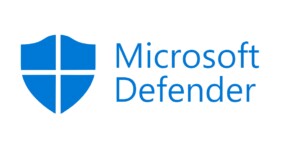What does hybrid work require from information security?
Hybrid work makes working more efficient
Hybrid working is a model where employees can choose their work location flexibly. This model became popular after remote working during the pandemic. Employees can work part of the time from home or elsewhere as remote work and part of the time in the office or in another physical work environment. The goal of hybrid working is to provide employees with the opportunity to do their work as efficiently as possible, reduce the stress associated with commuting, and improve employees' work-life balance. At the same time, it can help companies save on office space costs and increase employee satisfaction and engagement with their work.
However, hybrid work increases the risk of security breaches as employees use multiple devices and applications both in the office and at home. Companies cannot monitor security in the same way as in traditional office work, so it is important that security measures are improved to meet the needs of hybrid work.

Corporate security outside the office
The security policy should clearly define which devices and applications employees can use while working remotely, how they can use them, and what security measures they must follow. At the latest when moving to hybrid work, everyone should implement multi-factor authentication.
Companies should ensure that all devices, software, and applications in use are up to date so that potential security vulnerabilities can be fixed as quickly as possible. In addition, companies should require the use of a VPN connection for remote work. A VPN encrypts data transmission and increases security, making it more difficult for outsiders to access important information.
With these measures, companies can increase information security and protect their data during hybrid working. On the other hand, if implemented correctly, hybrid working can even increase information security, as companies must ensure that their own information security guidelines are up to date and that information security training is provided to their personnel.

Secure and protect your business
In a press release published by WithSecure™ in January, it is reported that new advanced security features have been added to the WithSecure Elements security platform related to Microsoft Teams and specifically to protect hybrid workers. The release highlights how the popularity of Microsoft Teams has also increased the number of attacks targeting the platform. The new protection complements the WithSecure Elements Collaboration Protection solution, which already effectively covers Microsoft Exchange Online, SharePoint Online and OneDrive services. The solution can quickly detect, block and remove malicious content, viruses, Trojans and ransomware.
Protecting hybrid workers is one of the most important security goals for a company. It is therefore worth taking care of security in the background and ensuring that personnel information is up to date by actively organizing training on the subject.



